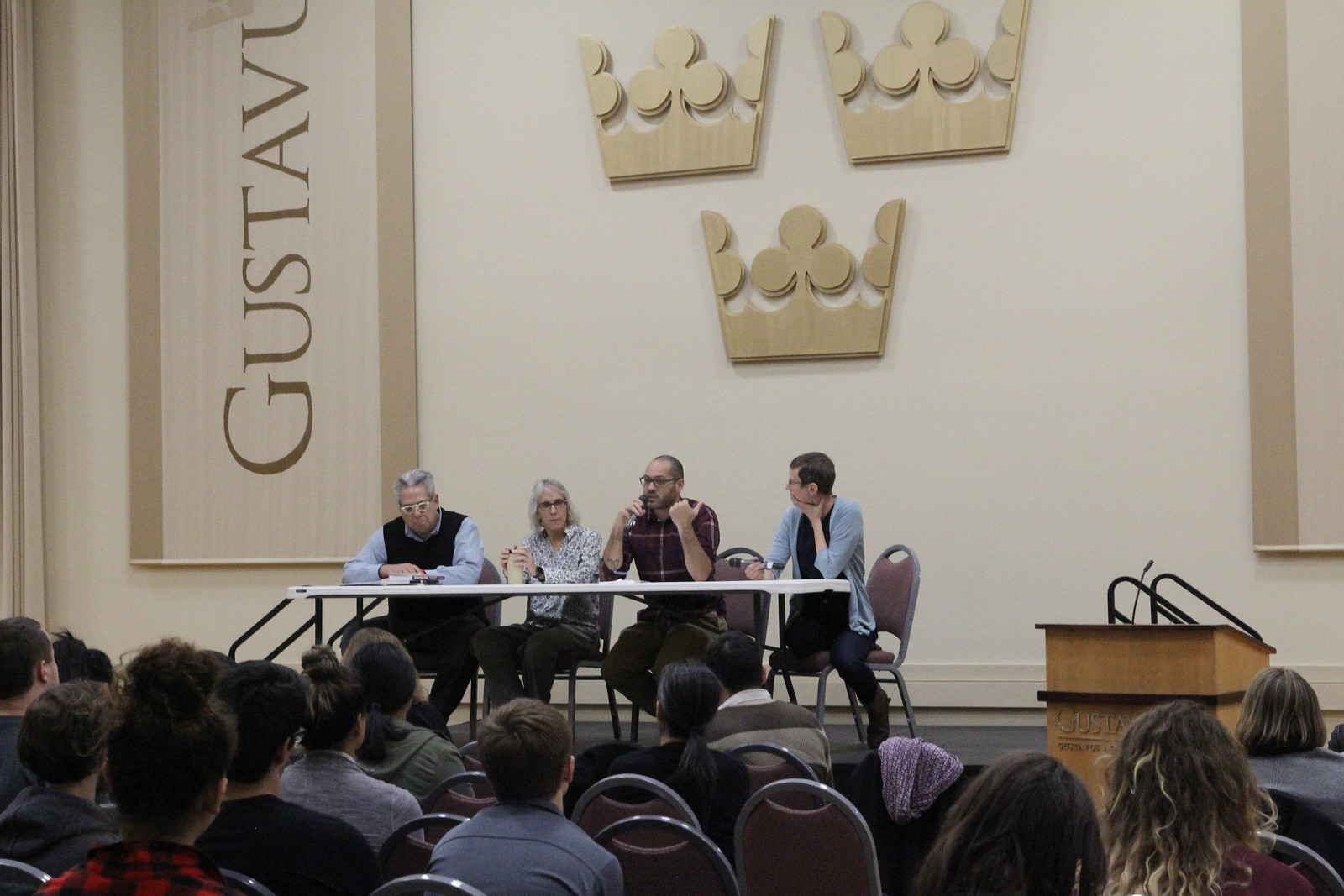At Gustavus Adolphus College, students are encouraged to take advantage of interdisciplinary coursework and seek opportunities in the classroom that help equip them for multifaceted problems they’ll face in our fast-paced world. But not all that learning takes place in the classroom, and not all of it focuses on the great challenges that we face here and now.
On Monday, October 29, a group of four professors offered an interdisciplinary retrospective on the historical events of 1968 – a year widely recognized as a seminal moment in the fight for civil rights and the future of protest and justice.
“Teach-In: 1968 – A Legacy of Protest” connected four completely different areas ‒ history, health and exercise science, geography, and geology – for a discussion of the year’s events through a variety of lenses.
“The event fostered a conversation about what 1968 and its legacy means and continues to mean for the generations that followed,” Spanish professor and event organizer Carlos Mejía Suárez said. “One of the key aspects for us in commemorating 50 years of these movements is that college students were really at the center‒and a significant driving force‒of these public interventions.”
History professor Greg Kaster opened the evening with a presentation on the history of 1968, using a variety of photos to explain key events and their impact at the time. Health and exercise science professor Bonnie Reimann followed with a lecture about the ways sports shape our society, pointing to Tommie Smith and John Carlos’ Black Power salute protest during the 200-meter medal ceremony and other events of the 1968 Olympics as examples. Geography professor Joaquín Villanueva discussed urban geography, focusing on how streets and cities can spark or influence protest. Finally, geology professor Laura Triplett drew parallels between contemporary protests for climate change and protests of the past.
Following the lectures, all four professors answered questions and elaborated on their talks during a question-and-answer session.
“I went into this with a certain expectation of what I was going to hear, but that was not the case,” said Kathryn Hicks ’21, who is currently taking a history course focusing on 1968. “Since it was an interdisciplinary event, I got to see different perspectives. For me, learning and hearing about the student uprisings and protest around the world helped me gain insight into why the events of 1968 in the U.S. happened at the time.”
The Latin American, Latina/o, and Caribbean Studies program sponsored the event and plans another for Wednesday, November 14 at 6 p.m. in Confer Hall 127. The theme for the next teach-in will focus on migration from Central American to the United States.

Leave a Reply